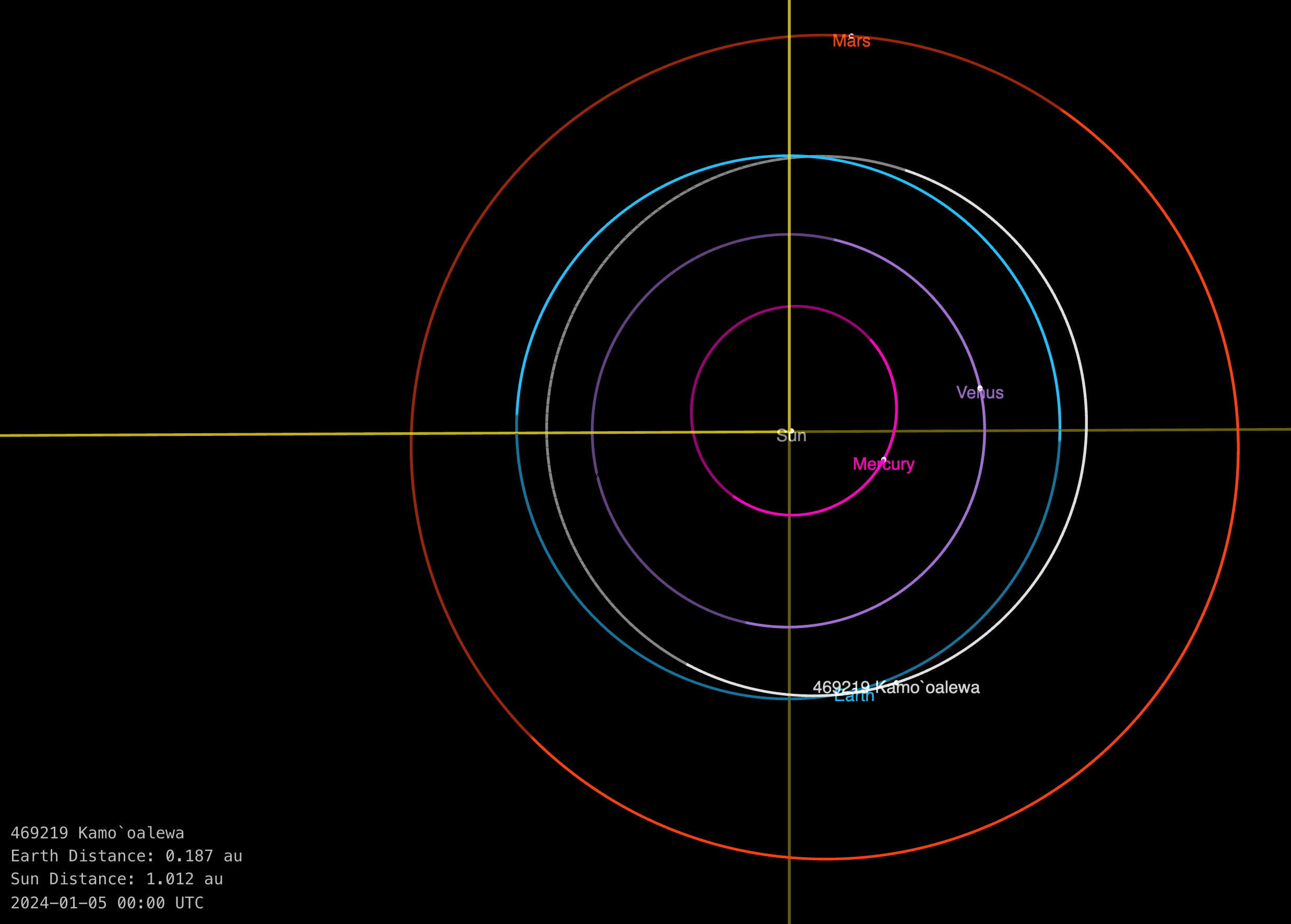
Normally, near-Earth objects (NEOs) are either asteroids or comets that are gravitationally influenced enough by nearby planets to enter Earth’s neighborhood. However, in April 2016, a group of astronomers discovered a near-Earth “asteroid” named Kamo’oalewa (pronounced kamo-o-a-lewa) and provisionally designated (469219) 2016 HO3, that appeared to be an outlier compositionally.
Fast forward five years and a team of astronomers from the University of Arizona suggested that the object could have originated from the Moon, since it shared more similarities with our earth-bound satellite than any other known asteroid.
Two years and a second University of Arizona team later, this time led by a graduate student in the Department of Physics, Jose Daniel Castro-Cisneros, the 2016 study and a 2021 study pushed a step further to confirm their idea.
Several teams are dedicated to detecting NEOs because asteroids and comets close to Earth can reveal key details about the early days of the solar system. Many asteroids and comets are relatively pristine since their formation, offering a window to the distant past. So, when the results for Kamo’oalewa differed, the team knew something unusual was going on.
Kamo’oalewa stood out for several reasons. First, it is classified as a quasi-satellite, meaning that it seems to orbit Earth but is really orbiting the Sun in an earth-like orbit. Second, Kamo’oalewa displays loyalty to Earth through its longevity. Usually, objects with earth-like orbits are stable for only a few decades, but Kamo’oalewa is expected to have a dynamical lifetime of millions of years. Further, the object’s spectrum offered clues to its unusual composition. Astonishingly, the spectrum matches lunar material and suggests the object is a small piece of the Moon.
“We looked at Kamo’oalewa’s spectrum only because it was in an unusual orbit,” says Regents Professor of Planetary Sciences and co-author Renu Malhotra of the University of Arizona. “If it had been a typical near-Earth asteroid, no one would have thought to find its spectrum and we wouldn’t have known Kamo’oalewa could be a lunar fragment.”
The spectrum shows that Kamo’oalewa is silicate-rich, a typical find in lunar-like material. Its history is partially revealed through extensive space weathering and reddening, beyond what is seen in nearby asteroids. Given the findings, the team suggested that Kamo’oalewa could have been ejected from one of the many meteorite impacts that have struck the Moon.
In with the new
An ejected piece of Moon entering a quasi-earth-satellite orbit was always considered an unlikely phenomenon. Normally, when objects impact the Moon, the ejecta can either fall back on the Moon’s surface or even Earth’s surface. In rare cases the right amount of kinetic energy exists to launch material out of the Earth-Moon system — but too much to enter earth-like orbits. Kamo’oalewa is testing this idea and now, the Castro-Cisneros’ team is testing Kamo’oalewa.
The 2023 group is using numerical simulations to show that it is, indeed, feasible for lunar material to achieve a quasi-satellite orbit. “We are now establishing that the Moon is a more likely source for Kamo’oalewa,” says Malhotra.
Castro-Cisneros plans on developing a simulation that creates a free pathway for Kamo’oalewa to reach Earth’s co-orbital space, and to calculate its age. Numerical computations like these will improve the understanding of NEOs. What’s more, these studies can help our “space forces” combat asteroids that may pose dangers to Earth.
If you’d like to know more, feel free to read University of Arizona’s news release, or some of our articles on either tracking NEOs or about the Apollo 17 lunar samples that revealed secrets of the Moon’s violent origin.









